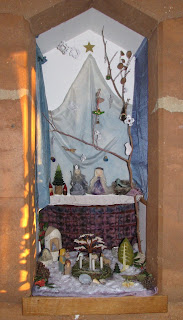Handwork in the Dell Workshop - Beginning Knitting December 5, 2010
10:00am - 12:00pm
Davis, California
Price includes yarn used during the workshop, a pdf handout (emailed), and organic snacks. Knitting needles available to use. Spindles, knitting needles, crochet hooks, wool roving, yarns, fiber arts supplies, books, silks and other items available for purchase at a discount during the workshop. $30
Price includes yarn used during the workshop, a pdf handout (emailed), and organic snacks. Knitting needles available to use. Spindles, knitting needles, crochet hooks, wool roving, yarns, fiber arts supplies, books, silks and other items available for purchase at a discount during the workshop. $30
Handwork in the Dell Workshop - Beginning Crochet
December 5, 20101:00pm - 3:00pm
Davis, California
Price includes yarn used during the workshop, a handout, and organic snacks. Crochet hooks available to use. Spindles, knitting needles, crochet hooks, wool roving, yarns, fiber arts supplies, books, silks and other items available for purchase at a discount during the workshop. $30
Aromatherapy in the Dell
December 20, 2010
2:00pm - 4:00pm
Fair Oaks, California
Price includes all materials (including oils used during the workshop), a pdf eBook, snacks and two aromatherapy products. Supplies, books and other items available for purchase at a discount during the workshop. $40 (Note...this is in Fair Oaks)
Handwork in the Dell - Beginning Spindle Spinning January 9, 2011
10:00am- 12:00pm
Davis, California
Price includes all spinning fiber used during the workshop, a pdf handout (emailed), and organic snacks. Spindles, knitting needles, crochet hooks, extra roving, fiber arts supplies, books, silks and other items available for purchase at a discount during the workshop. $30















































